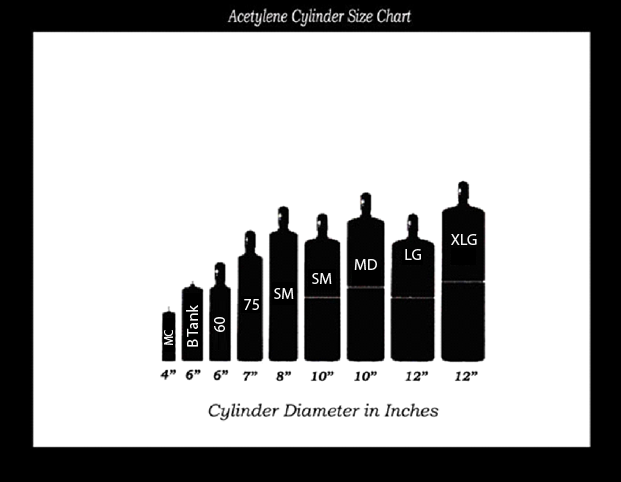(Liberty Industrial Gases supplies a full range of industrial gases in a variety of cylinder sizes for all your gas needs. the capability of providing pure gases along with customized mixing of component gases to meet all your welding needs.)
Acetylene (C2H2) is a colorless, highly flammable gas.
Applications
Used in optical spectrometry as an instrumentation gas; used in atomic absorption for elemental analysis as an instrumentation gas. Used as a fuel gas in atomic absorption spectrometry for elemental analysis.
Materials Compatibility
Metals: Stainless Steel; Carbon Steel; Aluminum; Monel; Brass (Low Copper)
Plastics: Kel-F®; PTFE, FEP, and PFA Fluoropolymers resins; Tefzel®; Kynar®
Elastomers: Kalrez®; Viton®; Buna-N; Neoprene; Polyurethane
Acetylene is a colorless and tasteless gas with a garlic-like odor. It is flammable and can be an asphyxiant. In order to prevent explosive decomposition, acetylene is supplied in cylinders filled with a porous mass packing material that is saturated with acetone or other suitable solvent in which the acetylene is actually dissolved. The specifications shown are on a solvent free basis.
The specifications for acetylene are found in the Compressed Gas Association (CGA) Pamphlet G-1.1. Grade D is considered commercial acetylene.
(Units in ppm (v/v) unless show otherwise)
| Limiting Characteristics | CGA G-1.1 Grade D |
Typical |
| Acetylene Minimum, % | 98 | 98.8 |
| Phosphine | 50 | .04% |
| Arsine | None | |
| Hydrogen Sulfide | 50 | None |
| Total Sulfur (calculated as H2S) | — | .006% |
| Clorine (combined) | — | None |
| Oxygen | — | .01 – .1% |
| Nitrogen | — | .02 – .2% |
| Hydrogen | — | Trace |
| Methane | — | Trace |
| Ammonia | — | None |
| Stibine | — | .0007% |
Certain acetylene plants do not purify the generated acetylene since for most purposes there is no demand for high purity acetylene.

